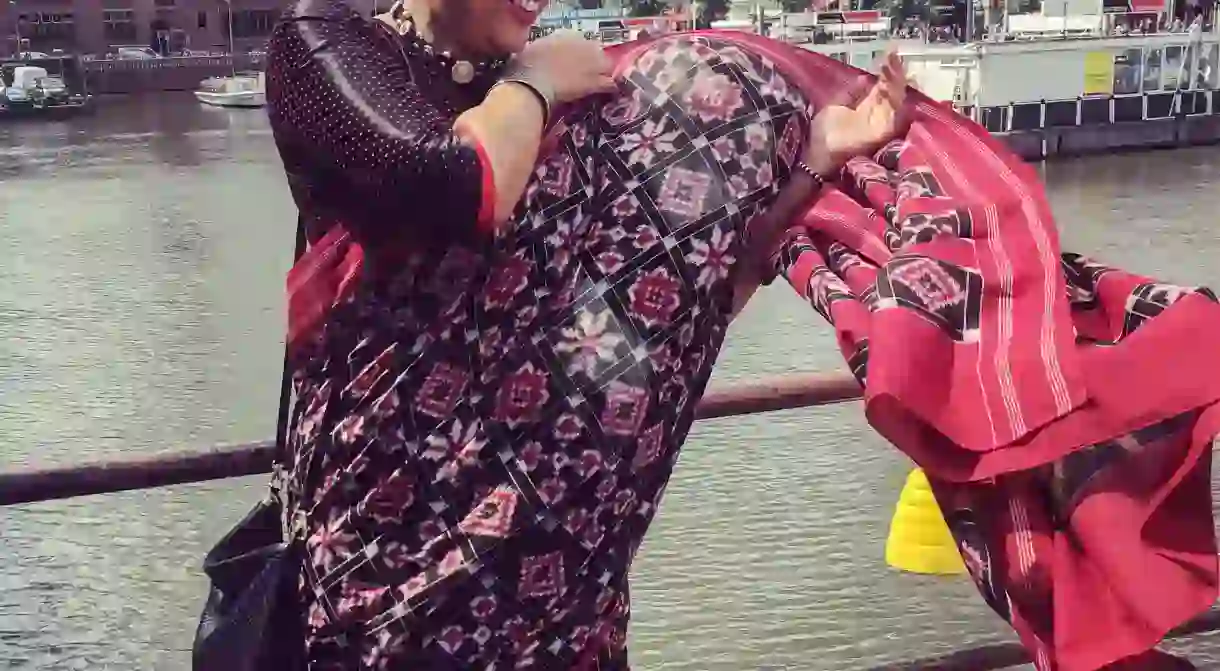10 Best Places To Buy Sarees In India

Given that women in India have been wearing sarees since they started to weave cotton in the 5th millennium BC, it’s safe to say this country in the Asian sub-continent is the capital as far as sarees are concerned. Every region has its own way of weaving and draping the, typically, five-yard-cloth attire. Silk began to be used around 2,450BC and the saree evolved into ghagra-choli, salwar kameez and other styles. Today, there are more than 60 kinds of weaving art resulting in textile brilliance, their origins all rooted in rural India. Here’s a guide to the best that India offers and where you can find the best.
The beauty of Baluchari
The artwork in Baluchari will make anyone’s jaw drop – the detailed weaving in these masterpieces are one of a kind. Usually woven in silk, every Baluchari saree tells a tale. The most famous border motifs are scenes from the court of Nawabs of Murshidabad. The sarees even recite the ancient Sanskrit tales of Mahabharata and Ramayana. Bishnupur is four-hour drive away from Kolkata, where you will see weavers at work.

The brilliance of Benarasi
The Benarasi weave is synonymous with bridal trousseau in India. Historically, a Benarasi saree would take months to weave, and it would be woven with real silver threads. But, due to the decline in demand for such artistic weaving today, Benarasi is made weaved in Jacquards too. A Benarasi saree will usually have floral and paisley motifs inspired from the Mughal era. If you are looking for the best Benarasi and would like to see how they are woven, you must visit Sarai Mohana.

The luxurious Mekhla
Mekhla originates from Sualkuchi and is usually woven in muga silk. A mekhla saree or piece of garment usually has traditional temple jewellery motifs, peacocks, butterflies and even rhinos! For the best Mekhla sarees, visit Saualkuchi, 35km from Guwahati. The village constitutes of weaver families mostly, who will sell directly to customers.

The colourful Sambalpuri
The ikat technique
The technique of weaving ikat was introduced in the 1900s, and villages in the Nalgonda district produced sarees in the style. An hour’s drive away from the metropolitan city of Hyderabad, the village of Bhoodan Pochampally is home to weavers who produce single and double ikat Pochampally sarees, that are nothing short of artistic brilliance. The weavers tend not to sell sarees where they make them, but their community have opened cooperative shops for interested customers.

The heavy cotton Chettinad
The natural shades of Bagru
The majestic Maheshwar
Legend has it that the 18th-century queen Maratha Ahilyabai Holkar, called weavers from all parts of India to her town and that was how Maheshwari weave became famous. But Maheshwari was only woven in cotton at that time. Now, you will find Maheshwari sarees made from a mix of silk and cotton. The geometric pattern usually woven in the pallu (loose end) of a Maheshwari saree is inspired from the ghats (steps and stones) in the Maheshwar region.
The geometric Patola
Many say that King Kumarpal of the Solanki Dynasty acquired 700 weavers from Jalna to create the geometric patterns on a Patola saree that are inspired from the large step wells in Gujarat. A double ikat Patola saree is a wonder to behold. As well as geometrical designs, a Patola saree also has bird and animal motifs. The best place to find a Patola in India is in the village of Patan, about three hours’ away from Gujarat.














